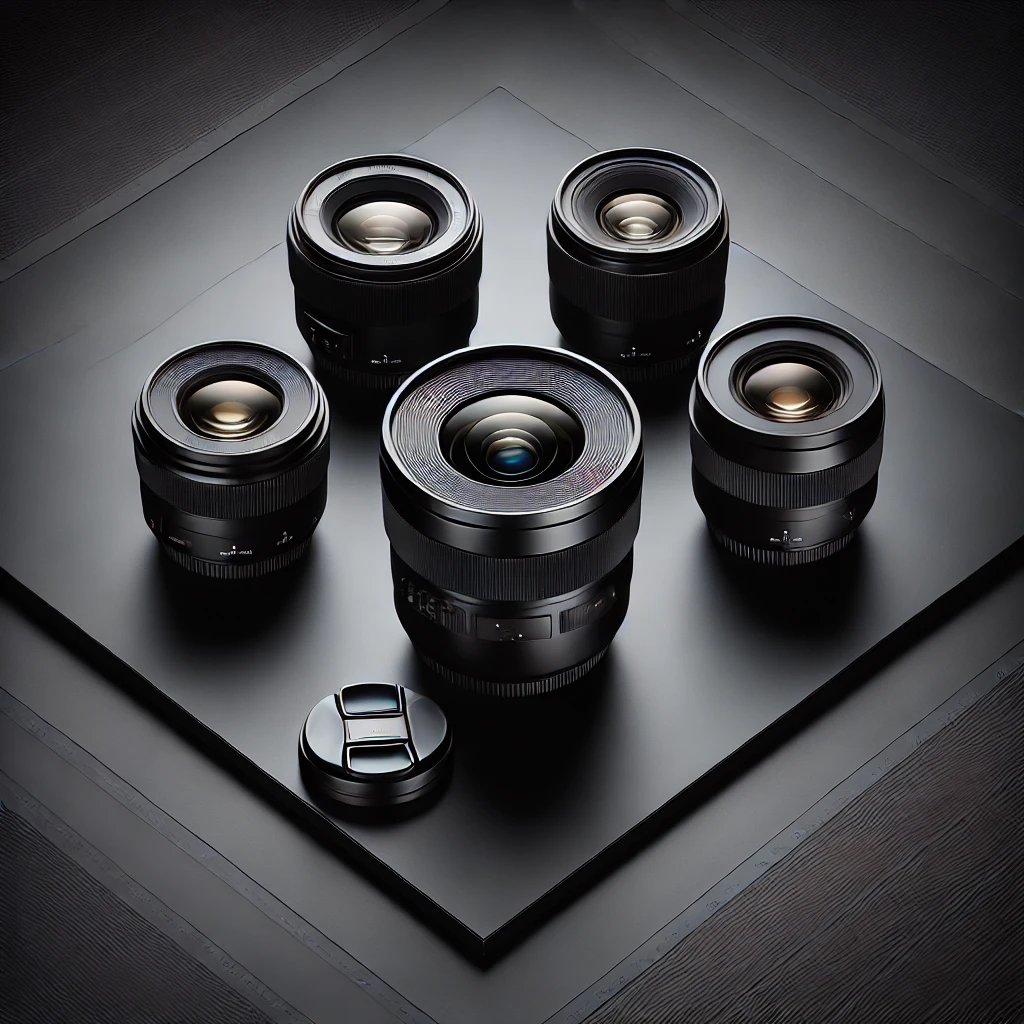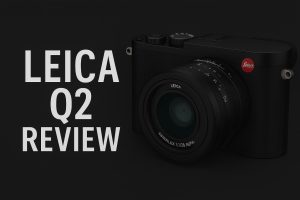Product photography demands precision, clarity, and sharpness to capture intricate details that highlight the product’s best features. The right camera lenses can make a significant difference in achieving professional-quality images. In this guide, we’ll explore the top five camera lenses for professional product photography, their key specifications, and why they are favored by experts.
Why the Right Camera Lenses Matters in Product Photography
1. Sharpness and Clarity
A high-quality lens ensures sharp details and vibrant colors, essential for product photography.
2. Focal Length and Perspective
Different focal lengths affect distortion and perspective, influencing how a product is presented.
3. Aperture and Depth of Field
A wide aperture allows for creative control over background blur, making the product stand out.
4. Lens Coatings and Build Quality
Premium lenses come with coatings that reduce glare and improve contrast, enhancing image quality.
Top 5 Camera Lenses for Professional Product Photography
1. Canon EF 100mm f/2.8L Macro IS USM
Why It’s Ideal for Product Photography
- Exceptional macro capabilities for capturing fine details
- Built-in Image Stabilization for handheld shooting
- Excellent color accuracy and contrast
Key Features
- Focal Length: 100mm
- Maximum Aperture: f/2.8
- Image Stabilization: Yes
- Minimum Focusing Distance: 0.99 ft (0.3 m)
- Lens Construction: High-quality glass elements
Best Use Cases
- Jewelry and small product photography
- Close-up shots with intricate details
2. Nikon AF-S VR Micro-NIKKOR 105mm f/2.8G IF-ED
Why It’s Ideal for Product Photography
- Superb sharpness with true-to-life color reproduction
- Vibration Reduction (VR) minimizes camera shake
- Consistent performance across different lighting conditions
Key Features
- Focal Length: 105mm
- Maximum Aperture: f/2.8
- Image Stabilization: Yes
- Minimum Focusing Distance: 1.03 ft (0.314 m)
- Lens Construction: Extra-low dispersion glass
Best Use Cases
- Beauty and cosmetic product photography
- Macro and close-up shots requiring high detail
3. Sony FE 90mm f/2.8 Macro G OSS
Why It’s Ideal for Product Photography
- High-resolution optical design for edge-to-edge sharpness
- Optical SteadyShot stabilization for handheld shooting
- Nano AR Coating reduces reflections and improves contrast
Key Features
- Focal Length: 90mm
- Maximum Aperture: f/2.8
- Image Stabilization: Yes
- Minimum Focusing Distance: 0.92 ft (0.28 m)
- Lens Construction: Advanced aspherical elements
Best Use Cases
- Luxury product photography
- Fashion accessories and detailed craftsmanship shots
4. Sigma 70mm f/2.8 DG Macro Art Lens
Why It’s Ideal for Product Photography
- Exceptional edge-to-edge sharpness with minimal distortion
- Optimized for high-resolution cameras
- Versatile focal length for various product sizes
Key Features
- Focal Length: 70mm
- Maximum Aperture: f/2.8
- Image Stabilization: No
- Minimum Focusing Distance: 0.64 ft (0.19 m)
- Lens Construction: Multi-layer coating for enhanced contrast
Best Use Cases
- Electronics and tech product photography
- High-resolution product imagery for e-commerce
5. Tamron SP 90mm f/2.8 Di VC USD Macro
Why It’s Ideal for Product Photography
- Vibration Compensation (VC) technology enhances stability
- High-speed autofocus with precision manual focus override
- Fluorine coating repels water and oil for easy maintenance
Key Features
- Focal Length: 90mm
- Maximum Aperture: f/2.8
- Image Stabilization: Yes
- Minimum Focusing Distance: 1.02 ft (0.31 m)
- Lens Construction: Enhanced moisture resistance
Best Use Cases
- Watches, jewelry, and premium accessories
- Food photography requiring sharp focus and texture detail
How to Choose the Best Lens for Your Product Photography Needs
1. Consider the Type of Products You Shoot
Macro lenses are ideal for small objects, while standard primes work well for larger items.
2. Look for Image Stabilization
If you often shoot handheld, stabilization helps maintain sharpness.
3. Evaluate Aperture Range
A wider aperture provides better background separation and enhances the subject’s prominence.
4. Assess Build Quality and Durability
Weather-sealed and coated lenses ensure longevity and reliability in different environments.
Conclusion
Selecting the right lens for product photography is crucial for achieving professional results. The five lenses listed here provide outstanding performance, clarity, and reliability, making them excellent choices for photographers looking to enhance their craft. Whether you’re capturing intricate jewelry details or sleek tech gadgets, investing in the right lens will elevate your photography game.

Mobile Photography Hacks: Candid Moments with Your Phone

Professional Model & Portfolio Photoshoots: Show Your Best Work
-

Street Photography Tips, Effects & Poses – Complete Guide
-

Leica Q2 for Photography: Why It’s Loved by Photographers
Mobile Photography Hacks: Candid Moments with Your Phone
Discover high-impact mobile photography hacks to capture genuine, gorgeous candid moments with your phone. Learn practical tips, composition secrets, and pro techniques to turn everyday scenes into stunning visual stories. Introduction: The New Age of Mobile Photography Photography has evolved beyond heavy cameras, technical jargon, and expensive equipment. Today, the power to capture extraordinary moments
Professional Model & Portfolio Photoshoots: Show Your Best Work
” Discover how to plan, style, and execute stunning portfolio photoshoots that showcase your skills, personality, and versatility. This comprehensive guide covers professional tips, posing ideas, gear suggestions, and industry insights for models and photographers.” Introduction – Why Portfolio Photoshoots Are the Cornerstone of a Photographer’s Career A well-crafted portfolio photoshoot is more than a
Street Photography Tips, Effects & Poses – Complete Guide
Discover the ultimate guide to Street Photography with expert tips, creative effects, and dynamic poses. Learn how to capture authentic urban moments, master composition, and tell powerful visual stories through your lens. Article Outline 1. Introduction to Street Photography Street Photography is more than just taking pictures of people in public spaces — it’s about
Leica Q2 for Photography: Why It’s Loved by Photographers
Introduction: The Cult Status of the Leica Q2 The Leica Q2 is not just a camera—it’s a statement. Combining the heritage of German precision engineering with modern digital excellence, it holds a special place in the hearts of professional and passionate photographers alike. With its full-frame sensor, prime Summilux lens, and minimalist design, the Q2
Top Cameras Under ₹1 Lakh for Freelance Photography
Freelance photography is no longer a niche—it’s a booming creative profession that demands not only vision and hustle but also the right gear. Your camera isn’t just a tool; it’s your storytelling partner. If you’re a freelance photographer aiming to balance performance, versatility, and budget, investing in a cameras under ₹1 lakh can offer the
Top Features of Nikon D850 That Make It Ideal for Photoshoots
Explore the top features of the Nikon D850 that make it a powerhouse for photoshoots. From exceptional resolution to dynamic range, this detailed Nikon D850 guide is built for professional and aspiring photographers. 1. Introduction When Nikon launched the D850, it quickly earned a reputation as a flagship DSLR that redefined what photographers could expect






